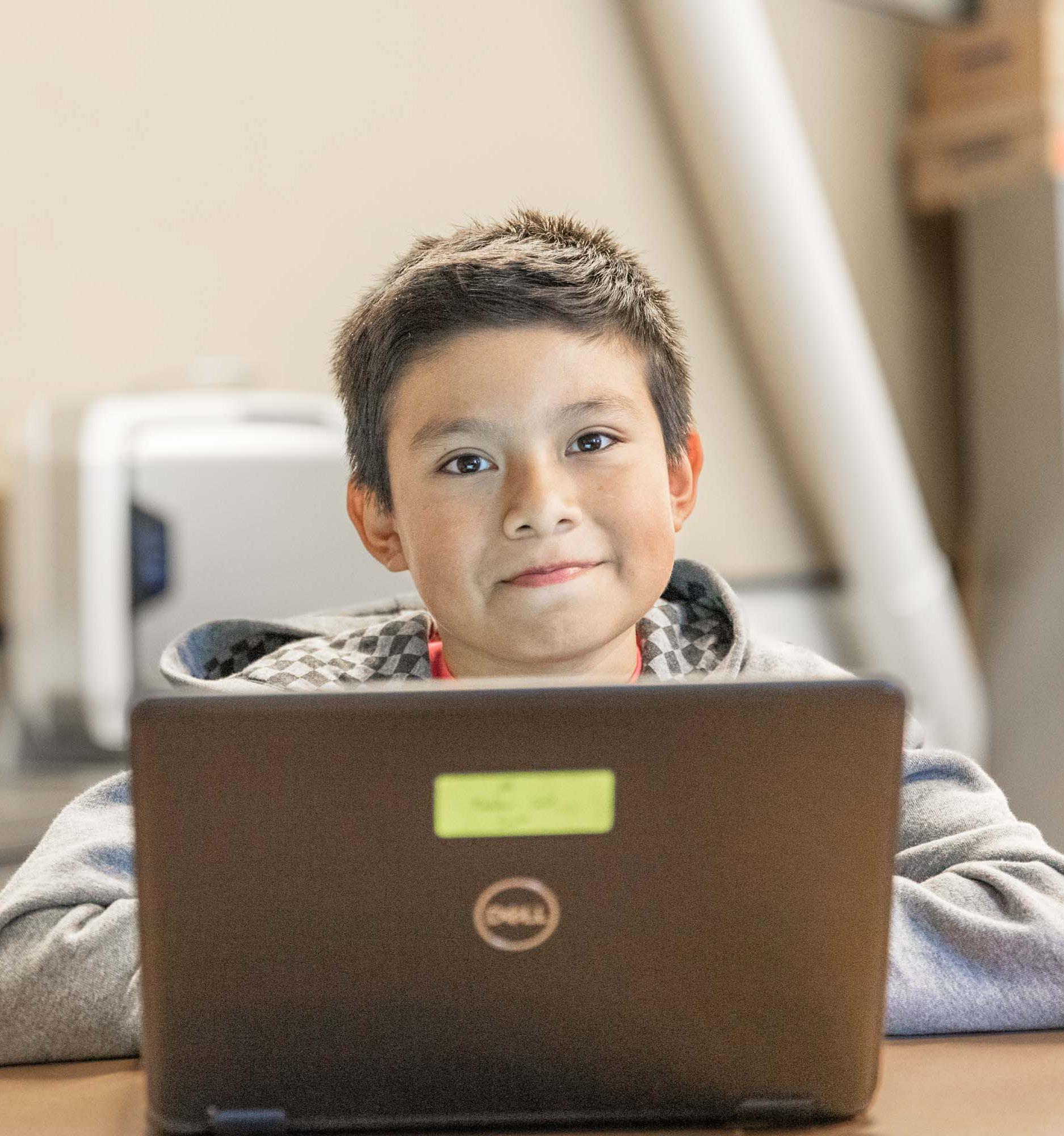
3 minute read
Multitiered Systems of Support and Universal Design for Learning
from 2023.02 The Voice
by FWPSComm
There are five key components to guide system development and implementation of MTSS:
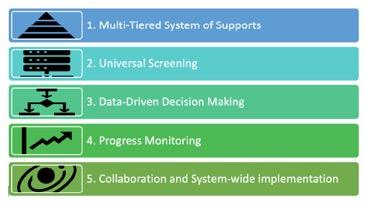
Advertisement
1. Multi-Tiered System of Support
2. Universal Screening
3. Data-Driven Decision Making
4. Progress Monitoring
5. Collaboration and System-wide implementation
Here we’ll focus on multi-tiered systems for core instruction, intervention, and supports:
• Tier 1 core instruction is the universal instruction provided to each and every scholar
• Tier 2 and 3 interventions are additional layered interventions that are varied in intensity and frequency based upon a scholar’s demonstrated needs
What happens when scholars are not yet showing mastery through tier 1 instruction?
Tier 2 and 3 interventions have the following guidelines:
To determine what and how to provide tier 2 and 3 interventions, PLC and MTSS teams engage in the
Academic
• Targets identified areas of need based on data
• Uses research based instructional strategies
• Happens in flexible small groups
• Uses highly interactive strategies with skills directly applied
• Does not replace core instruction
Problem Solving Process:
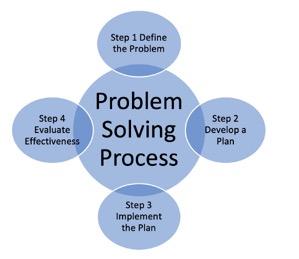
1. Define the problem
2. Develop a plan
3. Implement the plan
4. Evaluate effectiveness
• PLC and/or MTSS teams start by Defining the Problem
Social-emotional/Behavioral
• Provides additional instruction on social-emotional / behavioral skills
• Provides additional structure and predictability throughout the day
• Involves increased opportunities for feedback from staff on specific social emotional or behavioral strategies of focus
The key to defining the problem is getting clear on the specific skill or strategy you want scholars to learn and ensuring the skill/strategy is focused enough to be worked on in a short time frame (1-6 weeks). For example, a scholar might need additional support in informational comprehension but they could work on that all year. A more focused skill would be using text features provided in grade level text to be able to cite what the text says explicitly and to make inferences from the text. Once you have determined the skill scholars need, you begin planning for whole group reteach, small group instruction, or one on one support.
Read the next section about blended learning to learn more about using small groups to provide tiered interventions focused on the data-based identified skills needed.
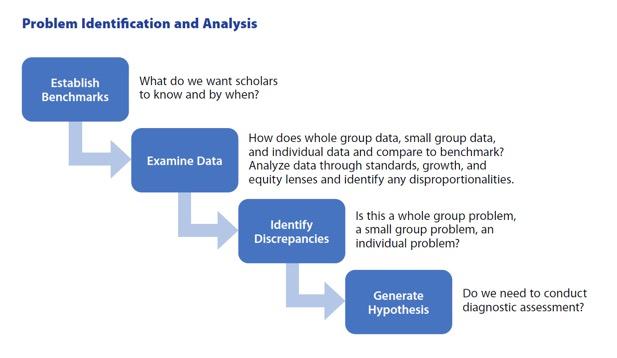
Blended Learning Introduction to Station Rotation
As we strive to support scholars as expert learners in our classrooms, blended learning provides a way to give scholars some control of time, place, pace, and/or path. Blended learning strategies can also create opportunities for more human connection in the form of small groups and 1 to 1 instruction.
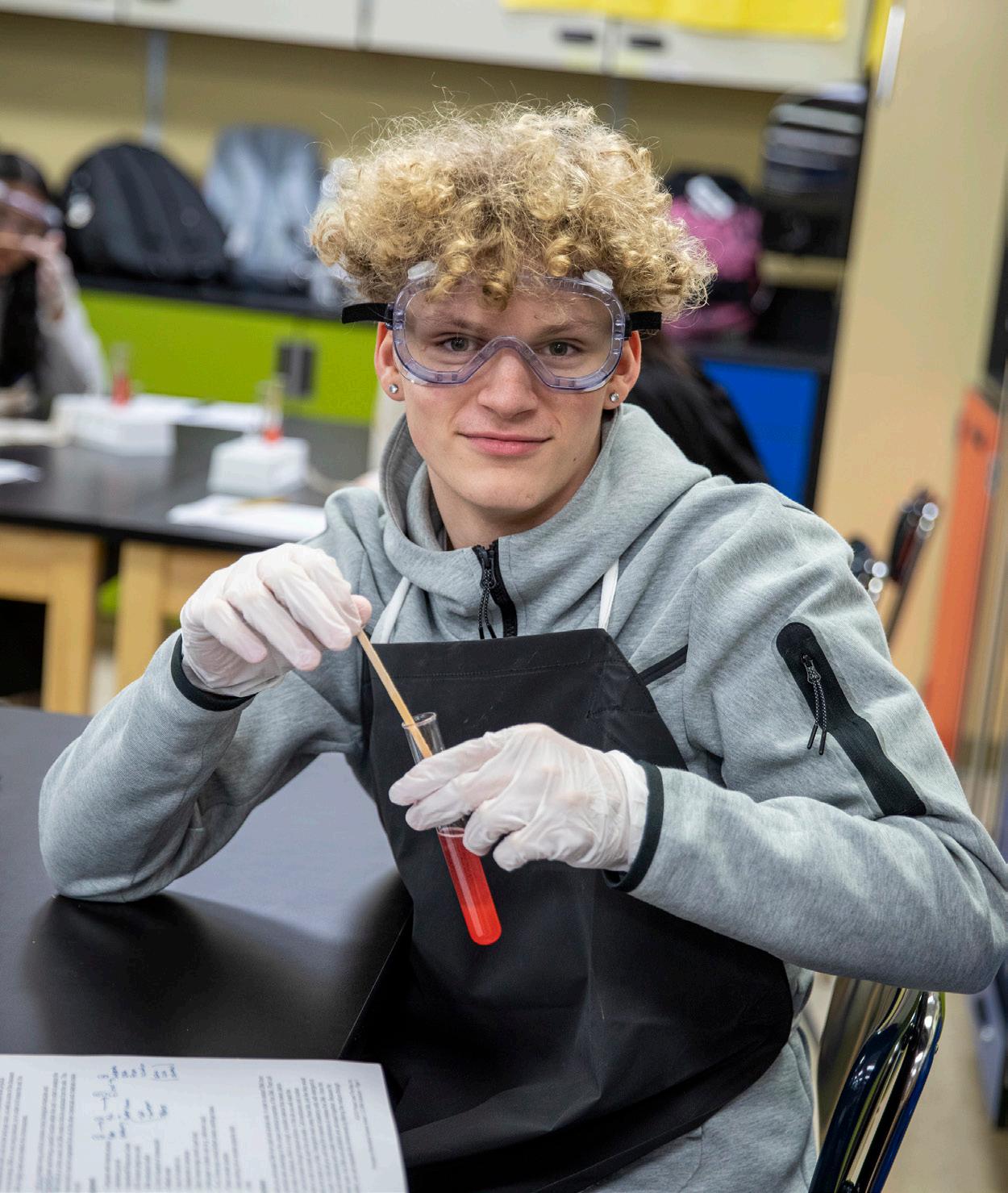
In blended learning there are four “rotation” models of instruction (Models - Blended Learning Universe):
• Whole Group Instruction
• Flipped Classroom
• Individual Rotation
• Station Rotation
Station Rotation is a blended learning model that requires teachers to establish routines for students, where they “rotate” through stations or centers tied to the learning they are doing in class. Oftentimes, this includes a teacher led group, a group where students actively engage with online learning resources, and a group that might include active engagement with offline activities. This creates opportunities for teachers to be intentional about groups, based on student needs, and to have time to meet with small groups or individuals to target instruction.
Dr. Catlin Tucker is an expert on Blended Learning, and author of books such as UDL and Blended Learning, and the Ultimate Guide to Blended Learning.
Watch this video to learn more about the station rotation model:
How and Why to Integrate Station Rotation into Your Classroom
Here is another example of blended learning and students working through stations based on their specific needs:
A Student-Centered Model of Blended Learning
Check out the Canvas course linked below to learn more about this blended learning strategy. The course includes three “stations” that allow you to learn about station rotation at your own time, place, pace, and path through:
• a selection of readings about station on a Canvas discussion page, allowing you to engage in discourse with peers
• a video about station rotation with a chance to reflect on a Canvas discussion page
• the exploration of a station rotation planning template in which you can explore possible teacher led stations, online stations, and offline stations
To explore this introductory course to station rotation:
• Log in to Launchpad
• Log in to Canvas
• Navigate to this self-enrollment link to enroll in the introductory course: https://fwps.instructure.com/enroll/ K8NM7P






